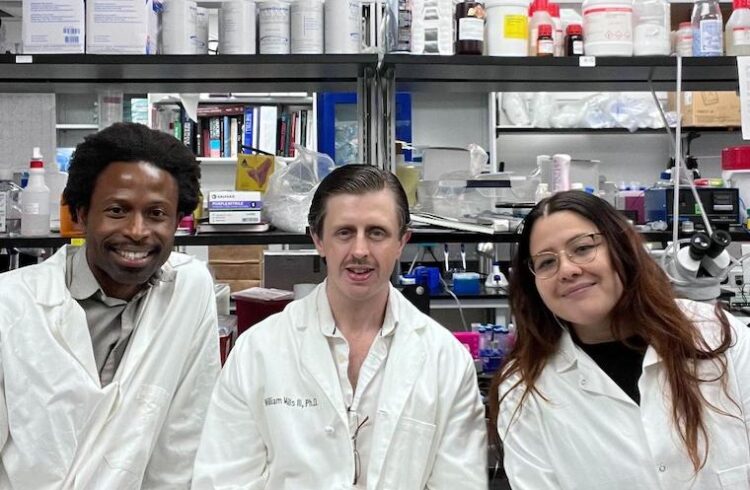
Although they have a greater than average risk of developing retinal problems and blindness, many people with diabetes never visit their eye doctor.
To ensure that the 2,000 diabetics served by its busiest outpatient clinic receive annual retinal exams, the University of Virginia Health System has become the nation’s first academic training facility to install cutting-edge equipment to scan patients’ eyes during medical check-ups.
“Preventive eye exams are important for people with diabetes. Yet, half of our patients with this condition never go to an eye doctor,” reports John G. Leiner, M.D., associate professor of internal medicine at the UVa and an attending physician at University Medical Associates, the school’s largest and busiest outpatient clinic.
Diabetes is a prevalent condition among the clinic’s 9,000 patients. While UMA has been successful in providing patient education, blood work, foot exams and insulin regimes to the diabetics it serves, it has been less effective in getting them to follow up on referrals to eye doctors.
According to Dr. Leiner, many UMA patients have transportation issues and cannot spend several hours waiting for dilated pupils to return to normal after an eye exam.
To eliminate these stumbling blocks, UMA recently installed the Optomap®, a retinal scanner that performs fast, painless and comfortable eye screenings. Manufactured by Optos plc, the equipment uses laser beams to produce an ultra-wide view of the retina and the back of the eye. The clinic transmits scanner images to UVa’s ophthalmology department, where specialists review them for diabetic retinopathy and other conditions.
“So far, we’ve scanned about 100 diabetic patients, and 20 percent of them had something wrong,” says Dr. Leiner. “We want to catch problems early and prevent them from progressing into serious conditions. Our goal is to have 100 percent of our diabetic patients undergo annual eye screenings.”
Sara Aldridge, R.N., handles retinal screenings at the clinic and believes that the process itself is very educational. “The conversation we have during the screening leaves a big impression on diabetic patients,” she explains. “Besides giving them a much better understanding of the risks they face, patients leave knowing the importance of getting preventive eye exams and then following up when problems are found. No one wants to risk going blind.”
UMA, which serves as a training ground in internal medicine for 100 residents each year, cares for patients from Virginia, West Virginia and Tennessee. While clinic patients come from all socioeconomic levels, many are poor and either uninsured or covered by Medicaid.
In operation for more than a quarter century, University Medical Associates handles 30,000 patient visits a year. Its staff includes ten faculty physicians and 18 nurses, as well as medical residents. The clinic is funded in part by the Commonwealth of Virginia and by subsidies from the UVa School of Medicine and the UVa Health System.


